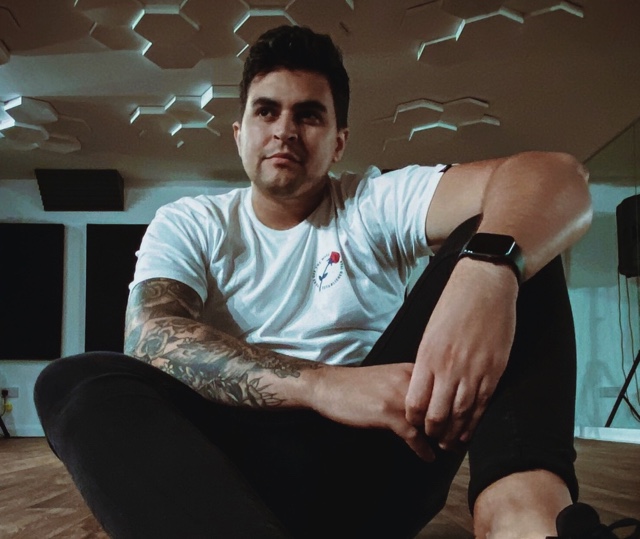The iPhone 13 is here! If last year’s iPhone 12 range (the iPhone 12 Mini, iPhone 12 Pro, and the iPhone 12 Pro Max) felt fairly iterative outside of the addition of 5G capabilities, then it would be fair to say that iPhone 13 is another year of evolution over revolution.
In many ways, the iPhone 13 is a longer-lasting, faster iPhone 12, with some great new color options and a smaller notch. Still, that’s no bad thing as the iPhone 12 was already a speedy phone with a solid battery, making the iPhone 13 now the best iPhone available, aside from the Pro models.
While the iPhone 13 Pro and iPhone 13 Pro Max add better cameras, an extra GPU, and a brighter screen with variable refresh rates, the iPhone 13 is also $200 cheaper. Apple has even doubled the base storage from 64GB to 128GB as standard, which is a huge plus for shutterbugs that keep original images on their device, or app addicts.
If you’re looking for an iPhone and aren’t interested in spending $1000, the iPhone 13 is one of the best smartphones options yet.
iPhone 13 review: Design and styling
- Available in pink, blue, midnight (black), starlight (white), and (PRODUCT) RED.
- Smaller notch, but no changes to iOS to accommodate it.
Average price: $799
Operating system: iOS 15
Screen size: 6.1-inch display
Storage: 128GB/256GB/512GB
5G ready? Yes
Headphone jack? No
Charging type: Lightning
Also consider: iPhone 13 Pro, iPhone 13 Pro Max, Google Pixel 6, iPhone 12
If you put an iPhone 13 next to the iPhone 12, you may be hard-pressed to spot a difference. That’s because they both look, well, like iPhones. Apple has refined the shape over more than a decade, and the iPhone 13 retains last year’s flat edges.
The 6.1-inch display makes up the majority of the front of the phone, as you’d imagine, with a slightly slimmer notch at the top for Face ID. Sadly, though, the notch being smaller hasn’t led to any changes – you’ll still get the same information and icons at the top of your screen as always. We’d have loved the option to add a battery percentage instead of having to use the Control Center.
The front is protected by a new protective glass coating called Ceramic Shield, but sadly, the back is not. While that means the former is four-times as durable as older iPhones, we’d avoid dropping it, lest you crack or shatter the back panel.
At the bottom you’ll find a Lightning port (we’re still hopeful of a USB-C iPhone one day), and on the back the dual camera lenses are now sat diagonally as opposed to being stacked one on top of the other.
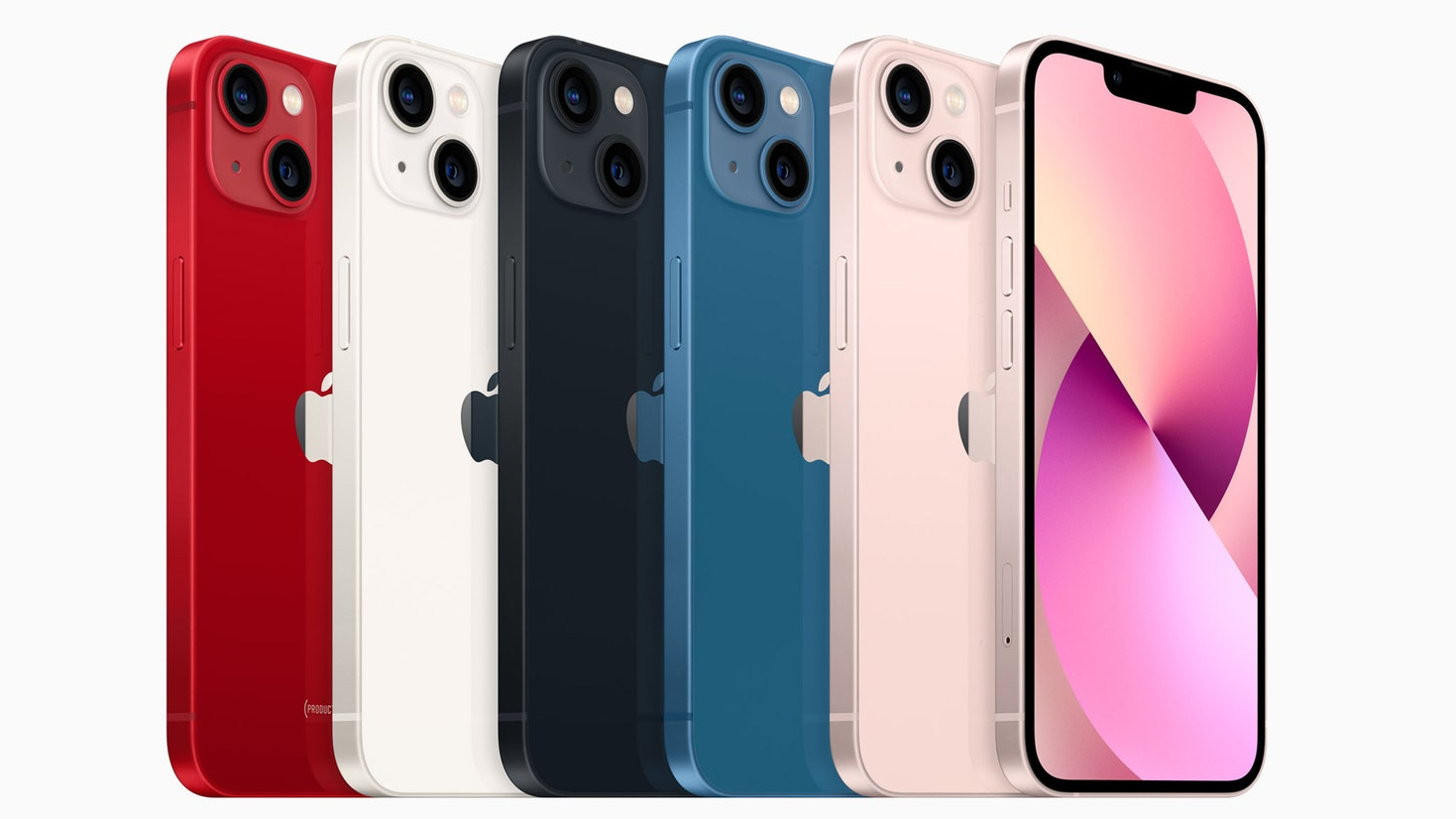
iPhone 13 review: Battery life
- No charger in the box.
- Improved battery life, but not quite as good as the iPhone 13 Pro.
The iPhone 12’s 17 hour battery life was solid, but the iPhone 13’s internal components have been rearranged to take up less space. This allows for a larger battery, meaning the iPhone 13 now gets 19 hours of battery life. That may not sound a lot, but it can be the difference between your phone running out of charge on the way home from a long day or being contactable for the whole journey. It’s still less than the iPhone 13 Pro battery, though, which offers an additional three hours.
Still, while this is the cheaper of the iPhones released this year, not having a power brick in the case is likely to upset many. Apple says this is to reduce waste, and it has a point, but it’s worth being prepared for a thinner, emptier iPhone box.
If you do have a compatible charger (20W or higher), you’ll get 50% battery charge in around 30 minutes, while you can also use Apple’s MagSafe or regular Qi-standard wireless charging if you don’t mind a slower charge.
iPhone 13 review: Screen and audio
- 6.1-inch OLED display.
- No headphone jack.
Display-wise, the iPhone 13 panel is much the same as last year. It’s still a 6.1-inch display with HDR functionality, and a resolution of 2532 x 1170 pixels. It’s brighter than last year’s, though, by 200 nits, which will only really be noticeable when the two devices are on side by side.
Color accuracy is impressive, as is to be expected with Apple, and the smaller notch fades away easily when streaming video content. Bezels on the sides and the bottom are thin, but it’s hard to get excited about when many Android phones offer a higher pixel count and forgo the notch.
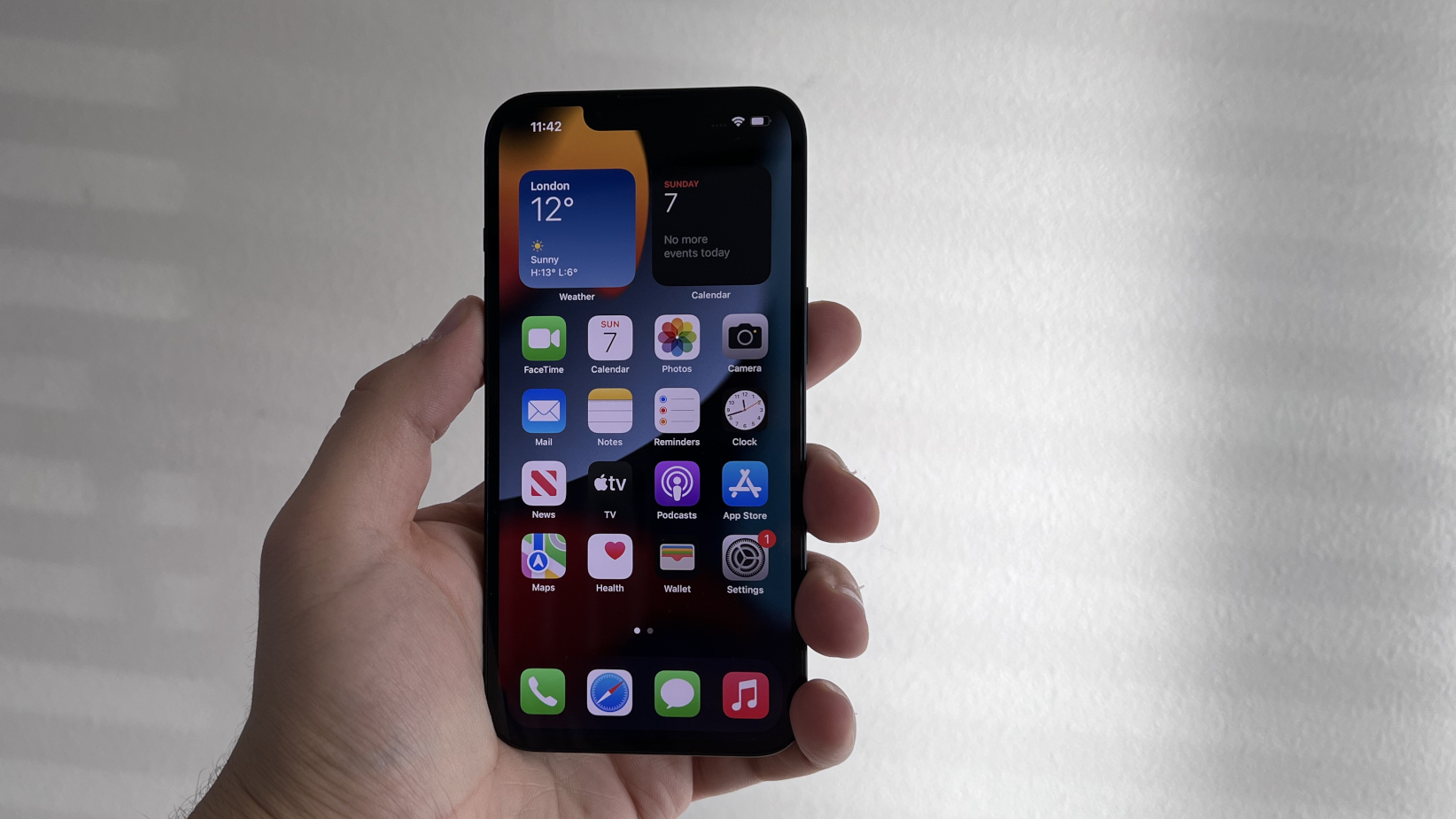
The iPhone 13 doesn’t have the iPhone 13 Pro’s ProMotion display technology either. It changes the refresh rate of the content on the screen, and while it feels great on the Pro phones, it’s unlikely that a less tech-savvy user would even realize.
On the audio front, the iPhone 13 has one speaker setup on the bottom, while the other is in the earpiece. When you’re watching movies, the dual speaker setup is punchy and crisp, while you can enjoy spatial audio using AirPods that’ll track your position in relation to the phone.
On the subject of AirPods, there’s still no headphone jack, so wireless is the only way to go (unless you use a dongle).
iPhone 13 review: Camera
- Two 12MP lenses on the back.
- One 12MP snapper on the front.
- Cinematic Mode allows for automatic focus adjustments in video.
Once again, the iPhone 13 (and iPhone 13 mini) have a two camera setup on the rear. That means you get one 12MP wide camera and one 12MP ultrawide camera, with no telephoto lens – you’ll have to opt for the iPhone Pro or iPhone Pro Max for that.
Still, the iPhone 13 borrows the Optical Image Stabilization (OIS) tech from last year’s iPhone 12 Pro Max, and this means that you’ll get impressively sharp shots even with a bit of wiggle from the subject or the phone.
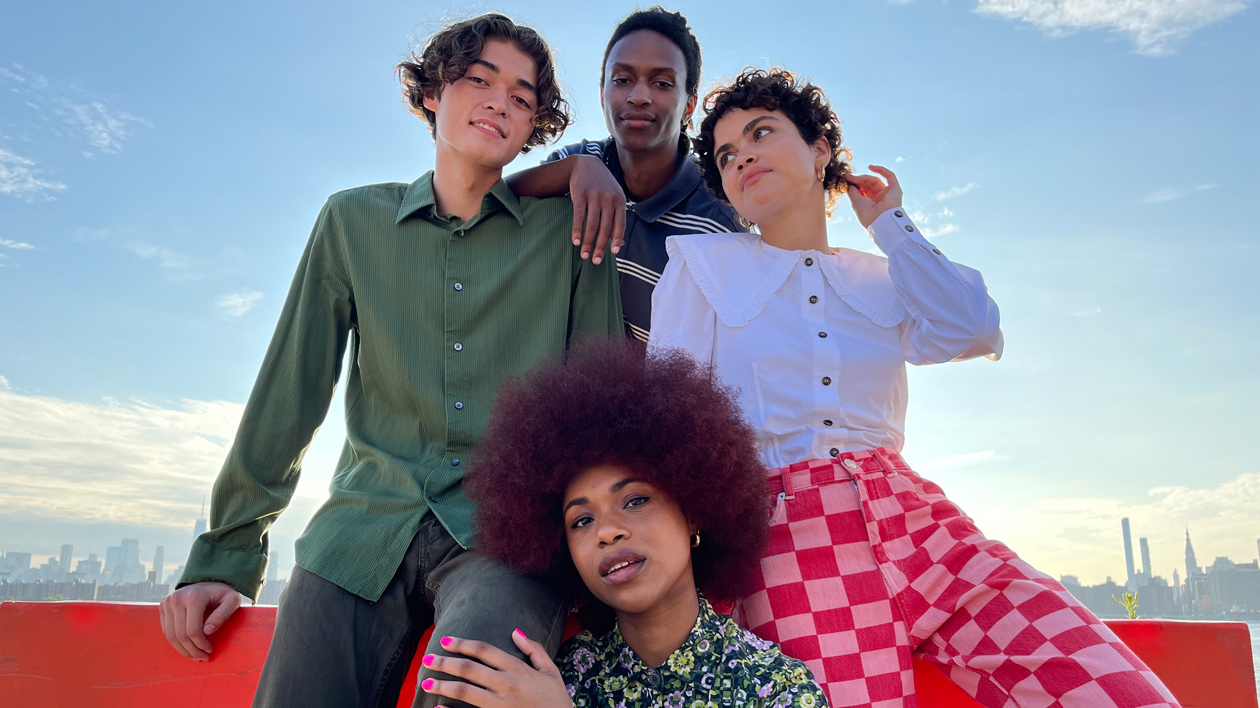
Night mode has improved again, too, so low-light settings will still make for solid photos. There’s also the new Photographic Styles we mentioned in our iPhone 13 Pro Max review. These are a set of pre-set, user-defined filters that can be applied when taking the photo, helping users to set their favored parameters from the get go.
The front camera has a 12MP sensor, and Portrait mode continues to improve, doing a better job of separating faces from backgrounds without leaving a “Vaseline smudge” in between.
When it comes to video, you can use the new Cinematic mode to automatically adjust between subjects in the foreground and background. It’s a neat addition, but it feels like a solid first entry in something that’s likely to improve year on year – at present, though, it’s more than a little fuzzy in some instances.
iPhone 13 review: Software and assistant features
- iOS 15 is a small upgrade.
- Siri still lags behind other assistants.
iOS 15 is pre-installed on the iPhone 13 and it’s much the same as iOS 14. While last year saw the addition of widgets and the App Library, making your iPhone more customizable than ever before, this year feels a little incremental in comparison.
The highlights are Live Text, which allows for iOS to pull text from images, and SharePlay, allowing users to sync up their movies, TV shows, and music during FaceTime calls. Safari has also been overhauled, allowing for new mobile add-ons and extensions à la the desktop version.
FaceTime will now offer Portrait mode for background blurring, and you can now cancel out background noise, too.
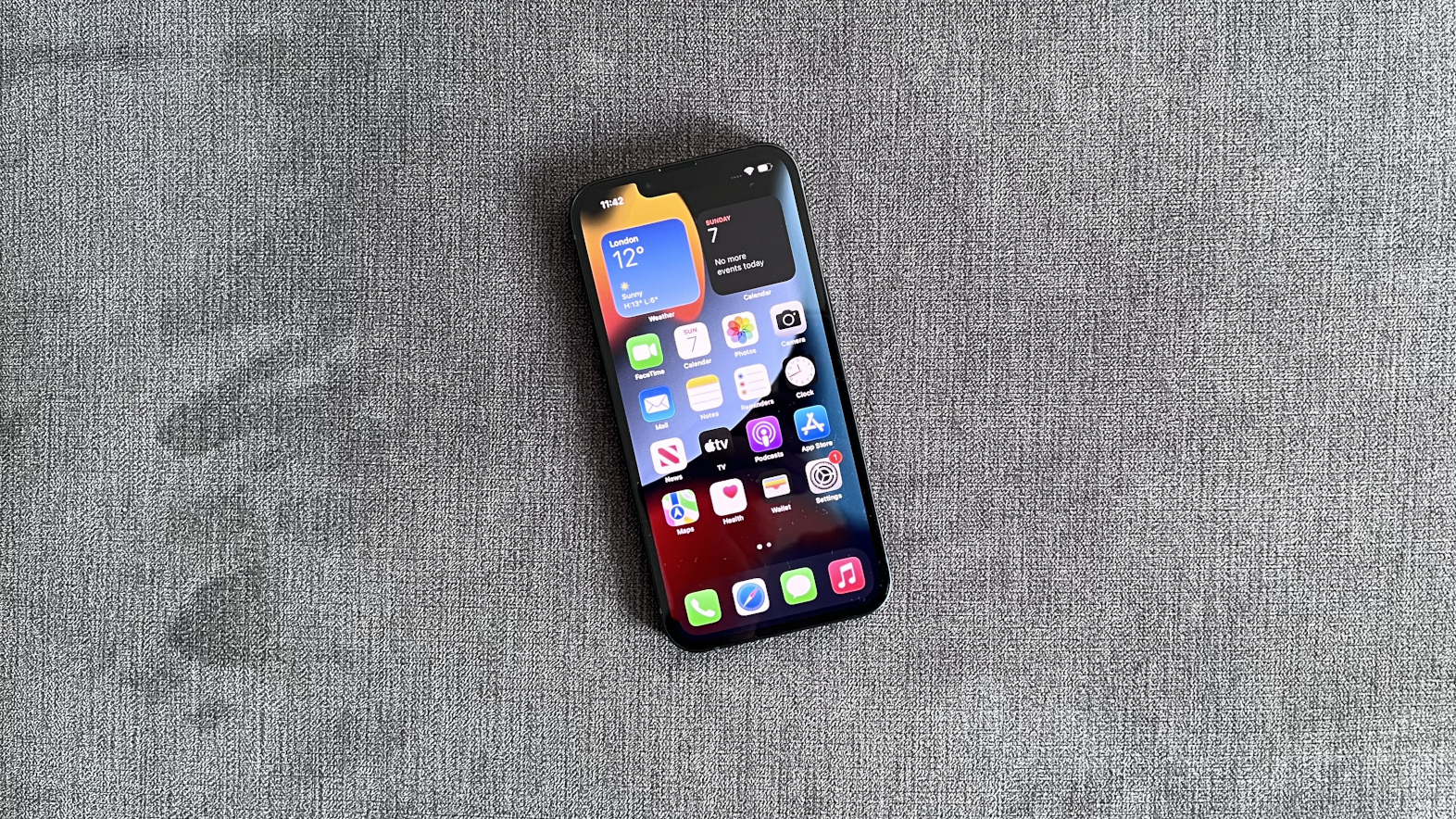
As we noted in our iPhone 13 Pro Max review, the biggest boost for users is a new set of Focus modes. Essentially acting as a natural extension of the “Do Not Disturb” function, iOS 15 lets users customize which notifications arrive during certain situations. To give you an idea, you can now choose to silence social networks during work hours, or mute texts during family dinners.
Siri is now based on your device, meaning Apple’s assistant is a little quicker to respond, but it’s still not the smartest. With Apple’s own apps, such as Apple Music, we’d wager around a 70% success rate for song, album, and playlist requests. Moving to a third-party option sees that drop significantly – Siri still can’t seem to get its virtual head around songs and albums in Spotify, for example.
iPhone 13 review: Security
- Face ID and passcodes are the only options.
- Apple’s “walled garden” allows for more secure app installations.
All devices in the iPhone 13 line use Face ID to unlock the device, verify logins, and also to allow for Apple Pay. If you’re coming from an older phone then losing Touch ID’s fingerprint scanner may take some getting used to, but Face ID has gotten consistently faster each year and now all it takes is a quick glance and you’re away.
The iPhone 13 does a decent job of tracking your features if the device is on a table, and it can be unlocked with your Apple Watch, too (ideal for moments where you’re wearing a face mask).
Apple still ensures all app installations go via the App Store, too, meaning the company can monitor all apps, the data they collect, and how well optimized they are. That may disappoint some users looking to use the power of the A15 Bionic chip for other apps, but it’s safer in the long run.
Should you buy the iPhone 13?
The iPhone 13 isn’t a big upgrade from the iPhone 12, which arguably wasn’t a big step up from the iPhone 11 before it. But, as each phone gets better, it’s evident that every year will bring “the new best iPhone.”
While the iPhone 13 remains less expensive than the iPhone X when that launched, it’s still not cheap, especially with other Android options offering impressive features at a few hundred dollars less (such as the Samsung Galaxy S21 Plus). For Apple users, though, that premium will buy them a great all-rounder with impressive cameras, good battery life, and all of the security of iOS.


